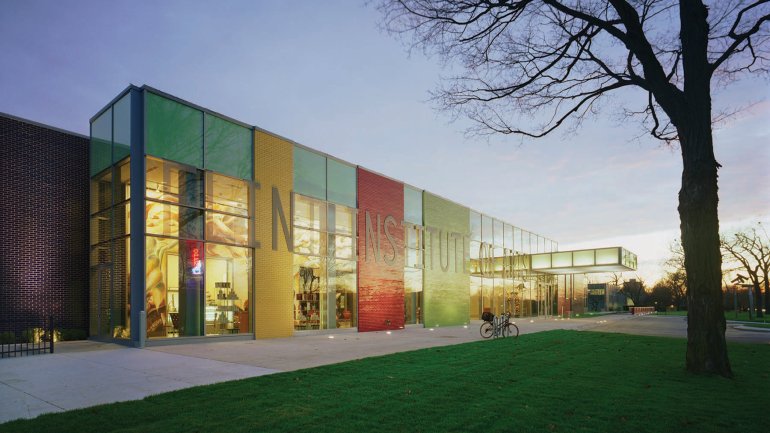Looking Ahead
Looking Ahead
When you think of flint, Michigan, what likely comes to mind is the city’s recent water crisis, or perhaps Michael Moore’s 1989 documentary Roger & Me, set amid the city’s economic decline after General Motors closed factories. These ongoing issues can overshadow an equally important story unfolding in Flint: a city with a lot to offer, whose art organizations are stepping up to enrich the lives of the people who live there.
The Flint Institute of Arts – both an art museum and the nation’s sixth-largest art school – is bolstering that mission with a major expansion that will add a contemporary craft wing as well as glassblowing education to its 1957 facility. Set to open next fall, the new wing, some 8,500 square feet, is designed to display two major collections: the recently acquired Dr. Robert and Deanna Harris Burger collection of contemporary ceramics and the Sherwin and Shirley Glass contemporary glass collection, on permanent loan.
The second part of the renovation will transform the art school’s nearly 4,000-square-foot courtyard into a year-round glass studio and state-of-the-art “maker space,” the site of studio classes as well as glassblowing, ceramic, and metal-casting demonstrations. The FIA already offers diverse programs, including Free Saturday events and film screenings; these new demonstrations will dovetail with school tours and classes that combine a STEM and art focus, so visitors can learn more about the fascinating processes – scientific, mathematical, and physical – that artists use.
During demos, free and open to the public, trained volunteers will narrate the action, helping visitors link what they see to works on display in the museum. The idea is to translate the sometimes elusive terminology in wall labels into an accessible language that helps visitors differentiate between cast and blown glass, between a kiln and a furnace, so they can explore the museum with confidence.
“We do feel that there’s a disconnect between understanding art and making art,” says FIA’s director of development Kathryn Sharbaugh. “If you’ve experienced the process of making, you actually understand what’s in the galleries better.” By helping people to better grasp how works of art are made, the FIA not only nurtures appreciation for the arts, but can also inspire the curious to start making.
That’s a good fit for Flint. Located about an hour’s drive northwest of Detroit, Flint is a manufacturing city, a home to makers ranging from engineers and welders to ceramists and glass artists. The FIA has long reflected that heritage, bridging training in art and craft trades with its collections. Established in 1928, it’s literally a community art school attached to a museum, a hybrid institution that links the process of making to the artwork it houses. Its new maker space will be a powerful tool to close the gap between product and process. As Sharbaugh explains, “It’s going to give people a better understanding of how things are made in general, not just art.”
FIA staff and supporters are excited, but they’re also prepared for criticism. The build-out has an $8.5 million price tag, largely funded by a grant. In a city with deteriorating infrastructure and one of the highest poverty rates in the United States, can they justify spending on the arts?
“That’s the thing about Flint; it’s a city of really extreme contrasts,” says Shelley Spivack. She is an attorney, photographer, and the project director of the Buckham/GVRC Share Art Project, which holds art classes for the kids at the region’s juvenile detention center. She describes how art enriches people’s lives and helps them see possibilities they might not otherwise have imagined. This understanding – and expansion of internal limits, which she has witnessed through her own work – is essential for people who are struggling or may feel trapped by circumstance.
Suellen Parker, a glass artist and one-time FIA student, agrees. “No matter how affluent your parents are or not, [it] just opens doors for you that you didn’t have when you’re allowed to create. You see different things in a different light.”
Megan Guerber is American Craft’s assistant editor.




